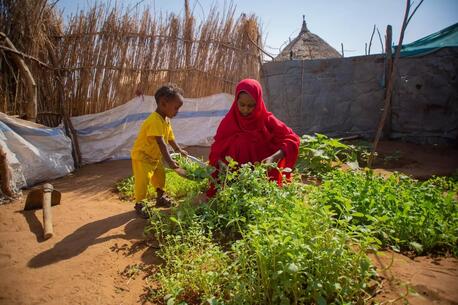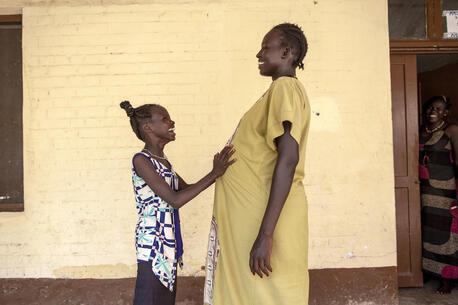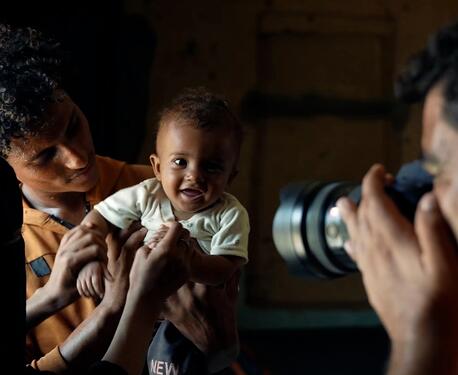Field Visit: In Uganda, UNICEF Innovation in Action
The World Health Organization (WHO) confirmed 10 cases of polio yesterday among children in the eastern Syrian province of Deir al-Zouwar.
 Dr. Abubaker, center, at Gulu District Regional Hospital observing child birth certificate registration by local staff. The computers, software and training for child birth registration are provided by UNICEF. Photo credit: Karen Turney, UNICEF USA.
Dr. Abubaker, center, at Gulu District Regional Hospital observing child birth certificate registration by local staff. The computers, software and training for child birth registration are provided by UNICEF. Photo credit: Karen Turney, UNICEF USA.As a U.S. Fund supporter, I was excited to see UNICEF’s work, so I prepared for my trip in early September by reading up on Uganda. Among several startling facts, I learned that life expectancy at birth is only 54 years old and that more than a quarter of the population lives on less than $1.25 a day.
I also learned that more than half of the population is under 18 years old, so I expected to see many of the challenges facing children. What I didn’t expect was the level of coordination and innovation by UNICEF to reach every Ugandan child in need.
One of our first visits was to the Karugutu Health Center, which was supposed to be a fully-resourced facility with a full-time doctor, a 20-bed in-patient facility, obstetric facilities, out-patient service and a lab.
But like many hospitals in Uganda, this one lacked proper resources. I was shocked to see more than one patient on single beds—many without mattresses. There were also patients of all ages crammed into one room. In the delivery room, one nurse attended to three women in labor simultaneously.
On a tour of the Buhinga Regional Referral Hospital in Kabarole District, I saw children with severe malnutrition. It was heartbreaking, but it was also wonderful to see that UNICEF was training the staff on how to diagnose and treat malnutrition with supplements and formula.
The impact of this work is showing: through UNICEF's efforts, the percentage of children under five stunted by malnutrition has dropped from 38% in 2006 to 33% in 2011.
What I found really inspiring was how UNICEF is integrating new ideas into its existing work. One example is UNICEF’s partnership with the Ugandan government to increase birth registration. This is important because it helps ensure children’s fundamental rights as citizens and provides important statistical data.
Right now, only 30% of children under five are registered, so UNICEF is providing training and technology to health facilities to address the problem. Beyond that, UNICEF is partnering with Uganda Telecom to get children registered by mobile phone. The MobileVRS program will help reach UNICEF’s goal of ensuring that 80% of children under five are registered by 2014.
This kind of innovative work starts at UNICEF Uganda’s Innovation Lab, which serves the entire East African region.
Although I’ve traveled to a lot, I have never experienced a trip like this one. This experience was powerful in so many ways and it made me realize how blessed we are here in the United States. I am committed to supporting UNICEF’s work and to inspiring others in my community and beyond to do the same.


